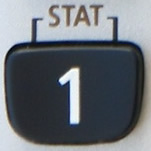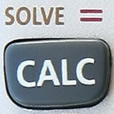This is the first round for series of posts about optimizing the use of calculator in solving math problems. The calculator techniques I am presenting here has been known to many students who are about to take the engineering board exam. Using it will save you plenty of time and use that time in analyzing more complex problems. The following models of CASIO calculator may work with these methods: fx-570ES, fx-570ES Plus, fx-115ES, fx-115ES Plus, fx-991ES, and fx-991ES Plus.
This post will focus on progression progression. To illustrate the use of calculator, we will have sample problems to solve. But before that, note the following calculator keys and the corresponding operation:
| Name |
Key |
Operation |
| Shift |
 |
SHIFT |
| Mode |
 |
MODE |
| Alpha |
 |
ALPHA |
| Stat |
 |
SHIFT → 1[STAT] |
| AC |
 |
AC |
|
| Name |
Key |
Operation |
| Σ (Sigma) |
 |
SHIFT → log |
| Solve |
 |
SHIFT → CALC |
| Logical equals |
 |
ALPHA → CALC |
| Exponent |
 |
x<sup>[]</sup> |
|
Problem: Arithmetic Progression
The 6th term of an arithmetic progression is 12 and the 30th term is 180.
1. What is the common difference of the sequence?
2. Determine the first term?
3. Find the 52nd term.
4. If the nth term is 250, find n.
5. Calculate the sum of the first 60 terms.
6. Compute for the sum between 12th and 37th terms, inclusive.
Traditional Solution
For a little background about Arithmetic Progression, the traditional way of solving this problem is presented here.
Calculator Technique for Arithmetic Progression
Among the many STAT type, why A+BX?
The formula an = am + (n - m)d is linear in n. In calculator, we input n at X column and an at Y column. Thus our X is linear representing the variable n in the formula.
Bring your calculator to Linear Regression in STAT mode:
MODE → 3:STAT → 2:A+BX and input the coordinates.
| X (for n) |
Y (for an) |
| 6 |
12 |
| 30 |
180 |
To find the first term:
AC → 1 SHIFT → 1[STAT] → 7:Reg → 5:y-caret and calculate 1y-caret, be sure to place 1 in front of y-caret.
1y-caret = -23 → answer for the first term
To find the 52nd term, and again AC → 52 SHIFT → 1[STAT] → 7:Reg → 5:y-caret and make sure you place 52 in front of y-caret.
52y-caret = 334 → answer for the 52nd term
To find n for an = 250,
AC → 250 SHIFT → 1[STAT] → 7:Reg → 4:x-caret
250x-caret = 40 → answer for n
To find the common difference, solve for any term adjacent to a given term, say 7th term because the 6th term is given then do 7y-caret - 12 = 7 for d. For some fun, randomly subtract any two adjacent terms like 18y-caret - 17y-caret, etc. Try it!
Sum of Arithmetic Progression by Calculator
Sum of the first 60 terms:
AC → SHIFT → log[Σ] → ALPHA → )[X] → SHIFT → 1[STAT] → 7:Reg → 5:y-caret → SHIFT → )[,] → 1 → SHIFT → )[,] → 60 → )
The calculator will display Σ(Xy-caret,1,60) then press [=].
Σ(Xy-caret,1,60) = 11010 ← answer
Sum from 12th to 37th terms,
Σ(Xy-caret,12,37) = 3679 ← answer
Another way to solve for the sum is to use the Σ calculation outside the STAT mode. The concept is to add each term in the progression. Any term in the progression is given by an = a1 + (n - 1)d. In this problem, a1 = -23 and d = 7, thus, our equation for an is an = -23 + (n - 1)(7).
Reset your calculator into general calculation mode: MODE → 1:COMP then SHIFT → log.
Sum of first 60 terms:
$\displaystyle \sum_{x=1}^{60}$ (-23 + (ALPHA X - 1) × 7) = 11010
Or you can do
$\displaystyle \sum_{x=0}^{59}$ (-23 + 7 ALPHA X) = 11010 which yield the same result.
Sum from 12th to 37th terms
$\displaystyle \sum_{x={12}}^{37}$ (-23 + (ALPHA X - 1) × 7) = 3679
Or you may do
$\displaystyle \sum_{x=11}^{36}$ (-23 + 7 ALPHA X) = 3679
Calculator Technique for Geometric Progression
Problem
Given the sequence 2, 6, 18, 54, ...
1. Find the 12th term
2. Find n if an = 9,565,938.
3. Find the sum of the first ten terms.
Traditional Solution
Solution by Calculator
Why A·B^X?
The nth term formula an = a1rn – 1 for geometric progression is exponential in form, the variable n in the formula is the X equivalent in the calculator.
MODE → 3:STAT → 6:A·B^X
To solve for the 12th term
AC → 12 SHIFT → 1[STAT] → 7:Reg → 5:y-caret
12y-caret = 354294 answer
To solve for n,
AC → 9565938 SHIFT → 1[STAT] → 7:Reg → 4:x-caret
9565938x-caret = 15 answer
Sum of the first ten terms,
AC → SHIFT → log[Σ] → ALPHA → )[X] → SHIFT → 1[STAT] → 7:Reg → 5:y-caret → SHIFT → )[,] → 1 → SHIFT → )[,] → 10 → )
The calculator will display Σ(Xy-caret,1,10) then press [=].
Σ(Xy-caret,1,10) = 59048 ← answer
You may also sove the sum outside the STAT mode
(MODE → 1:COMP then SHIFT → log[Σ])
Each term which is given by an = a1rn – 1.
$\displaystyle \sum_{x=1}^{10}$(2(3<sup>ALPHA X - 1</sup>)) = 59048 answer
Or you may do
$\displaystyle \sum_{x=0}^{9}$(2 × 3<sup>ALPHA X</sup>) = 59048
Calculator Technique for Harmonic Progression
Problem
Find the 30th term of the sequence 6, 3, 2, ...
Solution by Calculator
MODE → 3:STAT → 8:1/X
AC → 30 SHIFT → 1[STAT] → 7:Reg → 5:y-caret
30y-caret = 0.2 answer
I hope you find this post helpful. With some practice, you will get familiar with your calculator and the methods we present here. I encourage you to do some practice, once you grasp it, you can easily solve basic problems in progression.
If you have another way of using your calculator for solving progression problems, please share it to us. We will be happy to have variety of ways posted here. You can use the comment form below to do it.
 MATHalinoEngineering Math Review
MATHalinoEngineering Math Review Blog posts (unless otherwise specified) licensed under a Creative Commons Licence.
Blog posts (unless otherwise specified) licensed under a Creative Commons Licence.
Re: Calculator Techniques for Solving Progression Problems
I have a problem in geometric progression, i got a math error because the value of my r is negative. Here is the example
Find the sum of the first 7 terms of the sequence 9, -6, 4,...
Mode 3 6 is not applicable
In reply to Re: Calculator Techniques for Solving Progression Problems by Franz Mesa
Mode 3 6 is not applicable for negative common ratio. You can use it though but you need to exclude the sign and get your actual sign manually. This approach however is not applicable for for finding the sum of GP.
thank you much
thank you much
thank you very much sir!
thank you very much sir! sobrang laking tulong po. Godbless!
Sir, how about the technique
Sir, how about the technique when the given is SUM or when the problem requires to find the sum of odd numbers of the series?
In harmonic Progression, do I
In harmonic Progression, do I need to reciprocate the given when I input it on the calculator?
Example:
What is the 13th term of a harmonic sequence whose 3rd term is 12 and 8th term is 2?
A. 12/11
B. 11/10
C. 10/9
D. 9/8
SOLUTION:
Set calculator to MODE 3-2. Get the reciprocals of the given.
Encode:
x y
3 1/12
8 1/2
Press AC key.
Enter: 13ŷ
Result: 11/12
Get the reciprocal of the result. Therefore, the answer is A. 12/11.